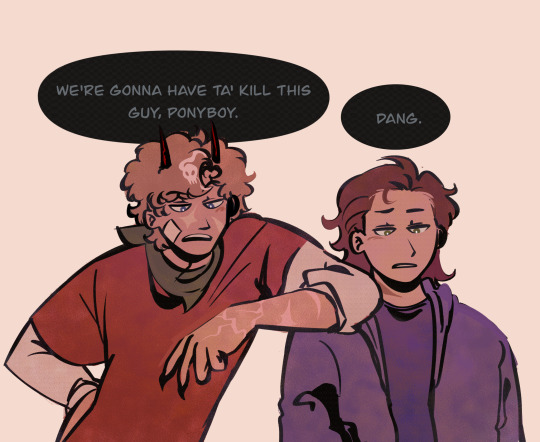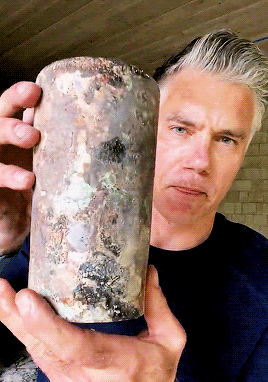#activity patterns
Explore tagged Tumblr posts
Text
Attitudes Towards Coyotes
Coywolves can live successfully in a variety of habitats (for related information, see my post on range/diet). The primary sources of mortality in the majority of these environments are anthropogenic (i.e., trapping, shooting, car accidents, and poisoning). Poisoning remained a widespread method of predator eradication until 1972, when its use on federal lands was banned in the United States; the use of household rodenticides is, however, still allowed.
Though a portion of the general public has become sympathetic towards these animals in recent years [1-2], deliberate killings still occur on city margins. An example of this was discovered during a 2005 study of a pack of coyotes in eastern Massachusetts [3]. Activity and movement patterns in this study were typical; the coyotes did not kill local pets or physically endanger citizens, but rather increased their nocturnal behavior to avoid people and displayed territorial behavior towards transient individuals. Even so, sightings of the individuals in this pack—Maeve, Jet, and Cour—led to some upset.
All three individuals were found dead during the study; in each case, the cause of death was ruled an anticoagulant pesticide (Brodifacoum, a second-generation poison and active ingredient in some forms of rat poison). Because all three displayed no abnormal behavior in the week leading up to their deaths and all died in less than a week, it is likely that, rather than having eaten poisoned prey, they were purposefully dosed at high concentrations.
Public support for the lethal management of carnivores has noticeably declined over time. Jackman and Way surveyed Cape Cod voters to examine “knowledge of and attitudes toward current coyote hunting policies and practices in Massachusetts” [1, p. 188]. Knowledge was largely limited, with only 40% being aware that Massachusetts has a hunting season for coyotes and 14% being aware that there are no bag limits—meaning a hunter can kill as many coyotes as they want. Responses to the survey indicated that only 23% supported the no-bag limits; the “only group to include majority support (62%)” [1, p. 190] comprised frequent hunters, who represented only a small percentage of the sampled public.
Anyone wishing to determine shifts in attitude towards and/or awareness of coywolves should consider the use of surveys à la Jackman and Way [1]. I wanted to incorporate a survey to determine whether residents of Massachusetts and Pennsylvania (where I am currently based) had noticeably different stances, but I did not give myself enough time to get IRB approval and properly analyze data. I would also recommend a potential partnership with an ecologist and/or biologist. Because I am an anthropologist and have little background in those fields, I was therefore somewhat limited in my view/understanding.
References:
[1] Jackman, J.L. & Way, J.G. (2017). Once I found out: Awareness of and attitudes toward coyote hunting policies in Massachusetts. Human Dimensions of Wildlife, 23(2), 187-195. https://doi.org/10.1080/10871209.2017.1397824
[2] Way, J.G. (2021). Coywolf: Eastern coyote genetics, ecology, management, and politics. Eastern Coyote/Coywolf Research, Barnstable, Massachusetts. www.easterncoyoteresearch.com/Coywolf/
[3] Way, J.G., Cifuni, S.M., Eatough, D.L., & Strauss, E.G. (2006). Rat poison kills a pack of eastern coyotes, Canis latrans, in an urban area. Canadian Field Naturalist, 120(4), 478-480.
TL;DR:
Coywolf mortality is largely anthropogenic
Attitudes towards coywolves have improved over time
Massachusetts and Pennsylvania have no bag limits on coyotes; Pennsylvania has no set hunting season
Hybridization | DNA Analyses | Range & Diet | Behavior & Ecology | Conservation | The Anthropocene
#coywolf#northeastern coyote#eastern coyote#canis latrans var.#canis latrans x canis lycaon#western coyote#canis latrans#eastern wolf#canis lycaon#alternative senior thesis project#anthropogenic mortality#predator control#carnivore management#activity patterns#movement patterns#hunting practices (MA/PA)#ecology#anthropology
3 notes
·
View notes
Text
Dazai canonically rambling about his loved ones at every possible opportunity is so dear to me.
Mori knew a lot of the things he did about Oda because Dazai told him. Akutagawa also knew about Oda and how important he is to Dazai because of Dazai's ramblings. Random, unnamed PM members know about Oda being very dear to Dazai, because Dazai praises him and talks about how great he is.
Chuuya knew straight away that Dazai had been speaking about him to the ADA. It wasn't something he expressed feeling betrayed or suprised about. It was just an immediate understanding that of all the ways they could probably have known about him and his ability despite it being confidential information in the PM, Dazai's ramblings were most likely the reason.
The way that Dazai speaks about Ranpo to quite literally anyone who will listen. To Fydor, to random cops, to Atsushi.
Dazai canonically brags about the people he cares about in an 'omg omg omg my person my people I love them look how amazing they are' way.
#this is so dear to me#i could go on and on about all the random comments dazai makes about his loved ones#Like yeah#the obvious comments about knowing Chuuya's breathing patterns and stuff#but also just#the completely unprovoked information he drops#I just think its cute that he loves them so much and so actively notices details about all his people#port mafia#armed detective agency#dazai osamu#bsd#bungou stray dogs#bungo stray dogs#oda sakunosuke#bsd odasaku#chuuya nakahara#ranpo edogawa#fydor dostoevsky#character traits
2K notes
·
View notes
Text






So reminder to everyone for the Bean Au Moon has always been New Moon. Which due to all the Nexus things puts more light on his Identity issues on being compared to Moon (fascinating too, i saw many people talk about that WAYYY before dark sun). Anyway recent comic where we do get KC squinting very hard about this Moon's growing issues about Old Moon. And we know me. Immediate father figure KC sitting there like 'Oh not another one'. A small tidbit of a thought cause I don't know what I'll do with this yet, similar with Earth and KC's comic. Conceptual but its there. Me remembering canon and going 'hmnnn i know its written as it goes but would've been interesting for THEM to have a talk.'
#me squinting everytime KC exists and yet- never utilized to a potential he couldve had considering Everything in hindsight yknow?#its VERY fun to think about how to use him for recent events or characters in regards to their arcs#bro was conneect with starpower moon and like creator revealing his HAND to him before ANYONE#imagine if he was more involved. Sun's comparisons not falling on kc but still new moon and its a point of frustration.#something even kc notices but part of it is sun actively trying to seperate things and still fall into pattern#okay thats a lot in the tags for that its... its always the tags#tsams#sun and moon show#sams killcode#sams moon#sams new moon#sams nexus#myart#bean eclipse au
404 notes
·
View notes
Text


i crocheted something
#my art#crochet#fiber art#i didn’t follow an exact pattern but it’s loosely based on a pattern by studiovisionart dot com (which is not even an active site rn)#i don’t think i’ve ever posted a pic of myself on tumblr. be nice to me#i hope i am as hot as you all hoped for#also first time crocheting an actual piece of clothing 🎉#all my other wearable stuff has been scarves#transmasc#trans man#handmade#handcrafted#crochet top
242 notes
·
View notes
Text
doctor does a brain scan on me and all that shows up on the MRI screen is the Elijah Wood Do You Wear Wigs interview
152 notes
·
View notes
Note
Does Jevin have any casual attire?
ooh yea i can say he does for sure as i have drawn him in his casual attire before
usually he either goes out in his comfort fit (him just wearing his hoodie and sweats) or something a little more styled like this hyee

emo ahh blueberry 💙⛓✨
#leer got an ask#soundleer's art#sprunki#whee this is heavily inspired by the one tweet i saw#i saw art of jevin drawn with jeans that have eye patterns on them and it activated a neuron that makes me go APESHITT#yes hes wearing a choker—a handcuff choker specifically. i own that choker actually so i referenced it hyee :33#and hell yea he wears one of those fila crop hoodies bc ngl i cant unsee that whenever i see ppl draw his hood with sleeves#designing jevin's casual attire... or more accurately his styled attire was hella fun i like to think hed be a lil fashionable hehe#sprunki jevin#cw scopophobia#anonymous
83 notes
·
View notes
Text

yeah. you have to watch us kill another guy, ponyboy. no you can't close your eyes. you have to watch. yeah. sorry
anyway something something that one trend w your two comfort characters. I don't like either of them but I'm stuck with them I guess. nightmare blunt rotation only bwcause ctommy would eat the blunt and Ponyboy would die
note: pb is on a stool because ctommy is 6'2 . god bless
#dsmp#the outsiders#ponyboy curtis#ctommy#art#we're gonna have to kill this guy#theyre talking about me#ohhh my god they're both little brothere#pattern recognition ACTIVATE#hell on art
358 notes
·
View notes
Text



Me: damn I feel like painting Soap rn
Me an hour later: but what if I completely fuck him up tho
(inspired by this painting by Zack Zdrale)
#call of duty modern warfare 2#cod mw2#cod soap#john soap mactavish#cod fanart#call of duty modern warfare#call of duty#body horror#ok serious note this was originally for like feeling out the vibes of yet another au Im thinking about#it kinda got away from me but I like it#dont ask why he doesnt have a shirt on#'face melting off' isnt an activity you should do with a shirt is my excuse#the patterns on the right side of his face are loosly based on the muscular system#bc I had to reference it for my uni work today and thought 'what if...'#BLOOD||HUNGER#<now that i started posting chapters im going back to tag everything related to the fic
204 notes
·
View notes
Photo










Anson Mount working on pit fire pottery in his workshop
Some highlights of Anson unveiling his latest pottery pieces on Instagram. Making clay pottery (mugs, bowls, vases, etc) is one of Anson's hobbies! The specific type of pottery produced is called earthenware.
"This is not a regular kiln opening, this is gonna be an opening of a barrel fire. Many of you probably heard of pit fire pottery and it's exactly what it sounds like; it's when you dig a pit, you build a fire in the pit, you put the pottery in there with a bunch of botanicals and chemicals, and you cover it up and let the fire do the work. We talked a lot about chaos in the process last time. This is one of the more chaotic processes that you can do with pottery because you just have absolutely no idea what the fire is gonna do." - Anson Mount
Source: Anson Mount Official Instagram May 24 2023 + clips from May 20 2023 and May 18 2023
#anson mount#captain pike#christopher pike#star trek#marveldaily#*edit#love watching people enjoying their hobby <3#especially the whole creative process#his pottery work is GORGEOUS#he should feel proud#he's always trying out new things#and new materials and styles#and he loves his tools :)#the colors and effects look so pretty! :))#as are the unexpected patterns#the pastels <3#CREATIVE DAD activate!
506 notes
·
View notes
Text
Behavior & Ecology: Activity/Movement Patterns & Territory
The risk of interspecific predation is, by definition, absent for apex predators living within a natural system. Once that system has been significantly and anthropogenically altered, this will not always remain the case. Various studies [1-2] have determined that apex predators are capable of perceiving and responding to anthropogenic risks and will do so in ways akin to those exhibited by natural prey species. Like other canid species, coywolves will exhibit altered activity patterns, shifting away from areas and/or times of increased human presence [3-6], therefore decreasing the risk of potentially lethal encounters with people.
Activity patterns—ranging from movement to foraging to grooming [4]—allow an animal to efficiently exploit its environment while minimizing risk and are influenced by a variety of environmental and individual factors [3]. Movement patterns are a subset of activity patterns and significantly impact home range and territory sizes, habitat utilization, and population density [7].
In altering these patterns, coywolves have increased their odds of successfully living alongside humans. Studies of their activity and movement patterns throughout various (sub)urban areas show little to no diurnal movement, moderate amounts of crepuscular activity, and high rates of nocturnal activity [4-8]. High rates of diurnal activity are only typical of populations that either (1) live farther from humans or (2) face lower rates of persecution [3-6].

In forested and largely undisturbed areas, for example, activity is usually spread equally throughout the day [4-5]. Possible explanations for this include differences in the availability of cover, prey activity patterns, and human-coyote interactions. It may be that these differences are also reflective of sex differences in mate search and parental activities. Males have been found to travel the farthest, and their mean daily distances are markedly greater than those of females, especially during the breeding season [4-6]. This increase in movement has been attributed to either (1) unpaired male coyotes traveling farther to find receptive mates or (2) increased territoriality.
Home range and territory are synonymous. While the first refers to an area regularly visited in search of food or mates, the latter expands on the definition by implying a level of protectiveness against outsiders—in other words, they become territorial. Most wild canids exhibit a high level of territoriality, so most of their home range will also be their territory. In coywolves, this will equate to between 5 and 10 square miles (12.9–25.9 km^2) in (sub)urban areas and 15-20 square miles (38.8–51.8 km^2) in rural areas [5]. Because they can travel long distances quickly (usually 10-15 mi [16.1–24.1 km] per day) [5; 4, 6-7], they may be located anywhere within their home range at any given time.
Because "older, well-established individuals effectively guard considerably larger areas from other packs" [5, p. 83], coywolves as a whole are likely to stabilize—or even decrease—their own numbers without the aid of hunting and trapping measures. The typical pack size falls between 3 and 5 members, consisting of the breeding pair and their offspring [5]. It is common for people to overestimate the size of a pack; when howling, changes in intonation, pitch, and volume can easily make a pack of 3 sound like a pack of 10 [5].
References:
[1] Brook, L.A., Johnson, C.N., & Ritchie, E.G. (2012). Effects of predator control on behavior of an apex predator and indirect consequences for mesopredator suppression. Journal of Applied Ecology, 49(6), 1278-1286. https://doi.org/10.1111/j.1365-2664.2012.02207.x
[2] Hertel, A.G., Zedrosser, A., Mysterud, A., Stoen, O.G., Steyaert, S.M.J.G., & Swenson, J.E. (2016). Temporal effects of hunting on foraging behavior of an apex predator: Do bears forego foraging when risk is high? Oecologia, 182, 1019-1029. https://doi.org/10.1007/s00442-016-3729-8
[3] Kitchen, A.M., Gese, E.M., & Schauster, E.R. (2000). Changes in coyote activity patterns due to reduced exposure to human persecution. Canadian Journal of Zoology, 78(5), 853-857. https://doi.org/10.1139/z00-003
[4] Patterson, B.R., Bondrup-Nielsen, S., & Messier, F. (1999). Activity patterns and daily movements of the eastern coyote, Canis latrans, in Nova Scotia. Canadian Field Naturalist, 113(2), 251-257. https://www.researchgate.net/publication/285966455
[5] Way, J.G. (2021). Coywolf: Eastern coyote genetics, ecology, management, and politics. Eastern Coyote/Coywolf Research, Barnstable, Massachusetts. www.easterncoyoteresearch.com/Coywolf/
[6] Way, J.G., Ortega, I.M., & Strauss, E.G. (2004). Movement and activity patterns of eastern coyotes in a coastal, suburban environment. Northeastern Naturalist, 11(3), 237-254. www.jstor.org/stable/3858416
[7] Way, J.G. (2011). Eastern coyote/coywolf (Canis latrans x lycaon) movement patterns: Lessons learned in urbanized ecosystems. Cities and the Environment (CATE), 4(1), Article 2. https://digitalcommons.lmu.edu/cate/vol4/iss1/2
[8] Way, J.G., Cifuni, S.M., Eatough, D.L., & Strauss, E.G. (2006). Rat poison kills a pack of eastern coyotes, Canis latrans, in an urban area. Canadian Field Naturalist, 120(4), 478-480.
Photo credit:
Way, J.G., Ortega, I.M., & Strauss, E.G. (2004). Graphs of activity patterns for coyotes on Cape Cod, MA, between June 1998-May 2000 [digital photograph]. Accessed 09 April 2023, www.jstor.org/stable/3858416, pp. 244-245.
TL;DR:
To decrease potentially lethal encounters with humans, coywolves will become primarily nocturnal
In undisturbed and forested areas, coywolves are more active throughout the day
Coywolves regulate their own numbers within a given area
A pack of coywolves (averaging 3-5 members) can easily sound larger than it is because of pitch, intonation, and volume changes while howling
Hybridization | DNA Analyses | Range & Diet | Attitudes | Conservation | The Anthropocene
#coywolf#northeastern coyote#eastern coyote#canis latrans var.#canis latrans x canis lycaon#western coyote#canis latrans#eastern wolf#canis lycaon#alternative senior thesis project#interspecific predation#animal behavior#ecology#activity patterns#movement patterns#territoriality#howling#anthropology
1 note
·
View note
Text
Spot the difference!


I have been sewing the first layer of trim onto my Revue Starlight jacket. The lower edge of this gold will be mostly covered by a second trim, so I intended to machine stitch the lower edge and handstitch the top edge. However, i just hated how the machine stitching looked.

The stitches stand out and break up the pattern of the lace, not blending in with it. I ended up ripping out the machine stitches and re-sewing it all down carefully by hand.
The whole perimeter of the cape only took one evening for the lower edge of the lace, and tonight I think I can get a good portion of the upper edge. It just looks so much better.


This section of lace is fully and securely sewn down, and you almost need a magnifying glass to see how!
#my posts#my cosplays#revue starlight#revstar#nana daiba project#and hand sewing is so CALMING#it's the best handiwork activity no contest#no counting no following patterns just sit there and needle go brrrrrr
25 notes
·
View notes
Text



Do you think a depressed person could make these? (been doing a lot of latch hook lately)
#this is such an old lady activity lmao#so it means there’s a lot of cute cat patterns#which is a large benefit#it’s also good for keeping the brain weasels at bay#particularly during boring work meetings and shit#it’s not quite scratching the urge to Create (that I currently can’t satisfy) but it’s something#misc#shut up nerd
21 notes
·
View notes
Text
Obi: how come you requested the Kaminoans create one unaltered Clone for you to raise?
Jango: oh, you know, just..
Obi [tilts head, fighting a smile]: just?
Jango: the overwhelming desire to be a father. you know.
#obi: i cant remember what it's like not to be a father#clones bein dads#paternal instincts activated#it's just in that mandalorian blood#obi wan kenobi#jango fett#boba fett#could be read as#jangobi#the pattern is easily recognized in the Clones#like hunter and tbb with omega#and rex with ahsoka#waxer and boil with the twi'lek girl on ryloth#cut lawquane and his everything#howzer with hera#cody with luke and leia would heal me#etc#probably definitely relates to the part of their brains that houses their breeding kink but i'll delve into that later#for now it's just them wanting to be dads#they just wanna be protectors and lovers at the end of the day#let the clones live#star wars#clone headcanons#star wars incorrect quotes#incorrect star wars quotes#incorrect quotes#attack of the clones#episode ii#clone family dynamics#star wars attack of the clones
37 notes
·
View notes
Note
Hi there! Could I please request sled-dog themed dividers? Maybe with some forest tree silhouette thingamajigs? Thank you! 💜🌿🐺
Hi anon! Hope these work! 🩵🌸
Dogsledding







#request answered#theme: trees#theme: animals#theme: nature#theme: activities#theme: sports#theme: snow#color: multi pattern#color: light blue#color: blue#color: green#color: black#post dividers#dividers#graphic design
43 notes
·
View notes
Text
I made many attempts to decipher what my favorite type of video game romance is but due to limits on the options in a lot of games creating a not very accurate sample I decided to try it with just romances I deem my absolute favorite.
And yeah, there is a certain pattern. (And are you surprised it's mostly DA and Owlcat games romances?)
It's basically just slightly different plays on (re-)learning how to love trope. Usually it's a character who for certain reasons, be it their lifestyle, upbringing or past trauma, is wary of deep connections and in the beginning hopes for something casual before inevitably falling for the PC. And a lot of times these characters use facades to hide how they truly feel about the PC or other aspects of their life. (Zevran, Fenris, Davrin, Daeran, Astarion)
And then there's Marazhai...
Marazhai is here for a different reason.
#all of them having pointy ears has nothing to do with anything#your pattern recognition is lying to you#marazhai is there because he's the only game romance I played that actively makes you worse#usually with evil romances you have to already be quite evil yourself or you corrupt the partner#but marazhai's corruption stays with pc even if you end your romance with him#dragon age#dragon age origins#zevran arainai#dragon age 2#fenris#dragon age the veilguard#veilguard#davrin#pathfinder wrath of the righteous#wrath of the righteous#pathfinder wotr#daeran arendae#baldur's gate 3#astarion#astarion ancunin#warhammer 40000 rogue trader#warhammer 40k rogue trader#rogue trader#marazhai#marazhai aezyrraesh
31 notes
·
View notes
Text
interesting how often the ones claiming that galadriel's season 2 arc was perfect and everyone who doesn't think so is just too haladriel brainrotted or something are the same folks who openly say it's fine if she were to just... fade into the background in season 3 or disappear outright. sorry I actually do think it's sexist for galadriel to be introduced as the central protagonist only for her to be gradually phased out so that gil-galad and elendil or elrond or whichever legendarium dude can have more to do.
#I mean effectively s2 was elrond's 'turn' in that sense. lots of development for him that hinged on sticking gal in a holding pattern#(don't even get me started on the way brimby's ascension to a lead pov could only be done with gal's absence & tbh at sauron's expense too)#but now some of yall are like IT'S GIL-GALAD'S TURN & frothing at the mouth for even less of galadriel so that he can take the s3 reigns#'gil-galad is important because he's the king!' girl i do not care lmao and guess what neither do the normies#normies get invested in the characters and relationships + conflicts that they were following from the beginning - the touchstones#we're not making this up this is how television works#shows need that connective tether the foundational thing that stays consistent to build your audience#it's why louis in the amc iwtv show is not going anywhere in s3 - because he's been the heart and soul for 2 seasons#and you can't just discard him for the sake of adhering to book canon!#you can't swap protagonists around season to season and expect your audience to keep up. it's very very hard to get away with#i'd argue this is even more key in streaming series with the limited episode counts. there isn't *time* to dilute the focus so much#ugh anyway s2's arc for galadriel was rife with problems primarily because you could remove her from it and hardly change the overall story#she was in this weird limbo where she was intensely invested in the A Plot but barred from affecting or interrupting it#within the A Plot itself - eregion and sauron and celebrimbor - she effectively didn't exist#every active plot driving choice near her was made by elrond cirdan gil-galad adar celebrimbor. one after the other. she was a passenger#'it's fine for other characters to make choices tho!' not when it's the whole gd season kiddos#and what do you know viewership is down
16 notes
·
View notes